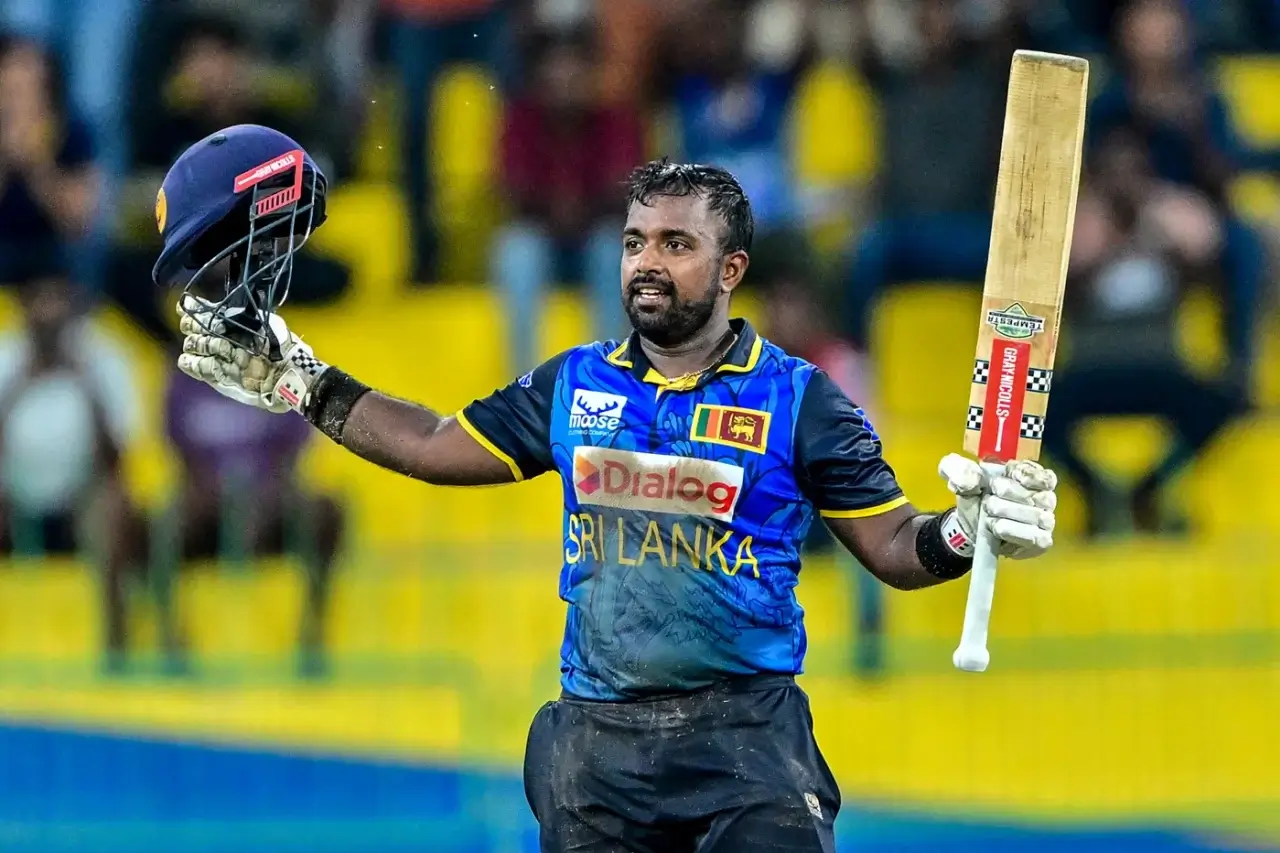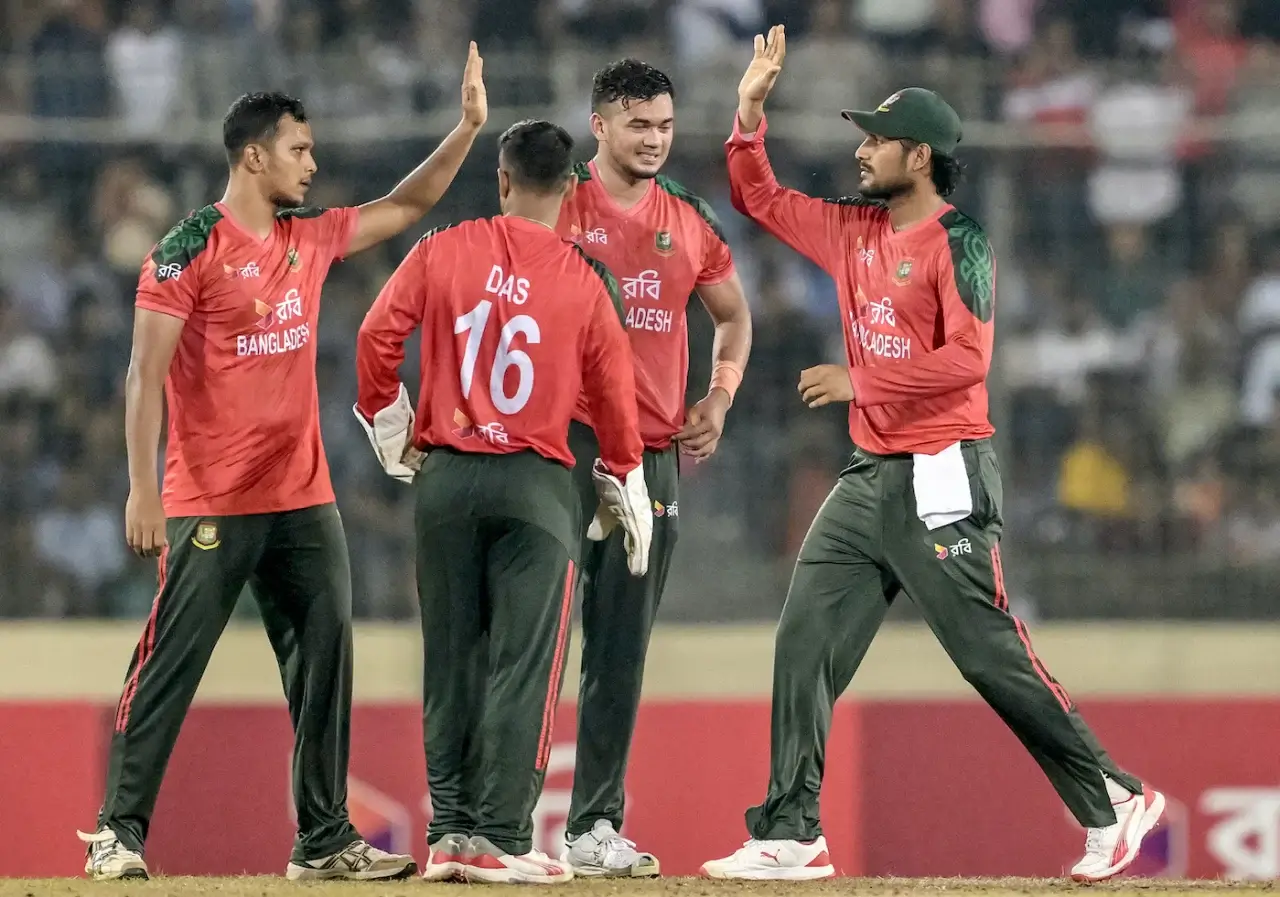T20I cricket is fast, thrilling, and demands big scores. Yet, Sri Lanka and Bangladesh lag behind. For over a decade, these teams have posted the lowest run rates among the top 10 T20I sides. Since 2015, their batting has been stuck at the bottom, ranking 8th and 10th. Even in 2024–2025, they’re barely ahead of Afghanistan, missing the 2024 T20 World Cup semi-finals. Why do they struggle so much?
Spin-heavy pitches at home, like Premadasa and Mirpur, are often blamed. These slow tracks choke aggressive batting, limiting their scoring rates. But is it just the pitches? Other factors, like coaching and strategy, also play a part. Data shows their batting averages are the lowest, too, with marginal gains abroad. For example, Sri Lanka improves by just 0.28 runs per over overseas, Bangladesh by 0.70, compared to 1.53 for others.
This gap hints at deeper issues in skill development. With the Asia Cup 2025 in the UAE and the 2026 T20 World Cup co-hosted by Sri Lanka, both teams have a chance to shine on familiar low-scoring pitches. But to compete globally, especially in high-scoring India, they need fixes fast. Let’s dive into their challenges, Asia Cup hopes, strategies, and how spin shapes their game in timeline.
What’s Holding Back Their T20I Batting?
Sri Lanka and Bangladesh have struggled with T20I batting for over 10 years. Their run rates rank 8th (Sri Lanka) and 9th (Bangladesh) since 2024, a slight shuffle from their 2015–2019 positions (8th and 10th). No phase—powerplay, middle overs, or death—has been a strength. Since 2024, Sri Lanka’s powerplay ranks 6th, while Bangladesh’s death overs hit 5th, thanks to better six-hitting. But their middle overs remain weak, dragging overall scores downlike for Punjab in IPL.
Why? Many point to spin-friendly pitches at home. Colombo’s Premadasa and Dhaka’s Mirpur produce low-scoring games, with batting averages among the lowest for top-10 teams since 2020. Coaches like Sanath Jayasuriya have called for batsman-friendly tracks to spark aggressive play. Bangladesh players prefer Sylhet’s flatter pitches over Mirpur’s grip. Yet, the problem isn’t just pitches. Overseas, their scoring rates barely improve—Sri Lanka adds 5.6 runs per innings, Bangladesh 14, while others gain 30.6. This suggests domestic structures and coaching limit batting flair. For context, their historical battles, like those in the India vs. Bangladesh timeline, show similar struggles against pace-heavy attacks.
Are Pitches the Only Culprit?
Pitches play a big role, but they’re not the whole story. Spin-heavy tracks at Premadasa and Mirpur curb aggressive shots, with T20Is there ranking 9th and 10th for run rates since 2020. Yet, coaching gaps and domestic T20 setups also stifle growth. Batters lack exposure to varied attacks, struggling abroad against pace. Fixing this needs better training drills and pitch variety.
Can They Shine in Asia Cup 2025?
The Asia Cup 2025 in the UAE is a golden chance. Sri Lanka, six-time champions, aim to reclaim glory in Group B (vs. Bangladesh, Hong Kong, Afghanistan). Captain Charith Asalanka banks on Pathum Nissanka’s form—he’s scored 30+ in 8 of his last 10 T20Is—and Wanindu Hasaranga’s all-round spark. After losing 2-1 to Bangladesh in July 2025, they’re hungry to rebound. Bangladesh, chasing their first title, kicked off with a 7-wicket win over Hong Kong on September 11. Skipper Litton Das’s steady 59 and Towhid Hridoy’s power signal a new, youthful edge. Their spin acclimation suits UAE’s slow tracks, similar to their home venues, perfect for double hat trick.
Both teams hope to leverage low-scoring pitches for an edge. Sri Lanka eyes a seventh title, matching India’s record, while Bangladesh wants a Super Fours spot. Their recent clashes, like those in the Women’s ODI World Cup history, show they thrive in tight games. A strong Asia Cup could build momentum for the 2026 T20 World Cup.
Their Hopes for the Asia Cup
The 2025 Asia Cup (September 9-28 in UAE) is a timely litmus test, especially with the 2026 T20 World Cup looming. For Sri Lanka (Group B: vs. Bangladesh, Hong Kong, Afghanistan), hopes center on reclaiming continental glory as six-time champions and defending their 2022 T20 title. Captain Charith Asalanka eyes a record-equalling seventh crown, leveraging Wanindu Hasaranga’s return for bowling depth and lower-order hitting.
Pathum Nissanka’s red-hot form (30+ runs in 8 of his last 10 T20Is, including three fifties) is pivotal for top-order stability. A strong showing could rebuild momentum after a 2-1 home T20I loss to Bangladesh in July 2025, positioning them as dark horses in subcontinental conditions.
Bangladesh (same group) chases their maiden title, riding a morale-boosting 7-wicket opener win over Hong Kong on September 11, where skipper Litton Das’s composed 59 set the tone. As underdogs post their “golden generation” (no Shakib Al Hasan or Mushfiqur Rahim), they aim to prove a youthful, power-hitting unit can compete.
Litton and Towhid Hridoy’s batting continuity, plus Taskin Ahmed’s pace reliability, fuel optimism. Their recent 2-1 T20I series win over Sri Lanka marks a historic first away victory, boosting confidence for a breakthrough. Both teams eye Super Fours qualification, with the UAE’s slow tracks suiting their spin acclimation.
Their Strategies in the Asia Cup
Adaptability to UAE’s variable pitches—often grippy for spin—will define success. Sri Lanka’s blueprint emphasizes middle-overs control via spin (Hasaranga, Maheesh Theekshana, Dunith Wellalage) to choke runs, paired with Dushmantha Chameera’s early breakthroughs against Bangladesh’s top order. Batting relies on Nissanka’s anchors and all-rounders like Dasun Shanaka for finishes, with a chase-first preference (inspired by LPL trends: fast outfields, short boundaries). Fielding improvements since 2023 are key, as captain Asalanka notes, to avoid leaks.
Bangladesh
They lean on a proactive pace upfront (Taskin, Mustafizur Rahman with the new ball) and spin in the middle (Rishad Hossain’s leg-spin, Nasum Ahmed’s left-arm variety). Their 2025 squad revamp—dropping Najmul Hossain Shanto for Mohammad Naim’s strike-rate firepower (140.40 in domestic T20s)—signals a youth-driven, aggressive mindset.
Litton urges team-wide efforts over individual heroics, as seen in their July 2025 Sri Lanka rout (Mahedi Hasan’s 4/11). Expect Litton-Hridoy solidity, with Jaker Ali’s finishing and better death-over-sixes. Both sides prioritize fitness in UAE heat, with Sri Lanka’s four-day rest pre-opener aiding freshness.
| Aspect | Sri Lanka Strategy | Bangladesh Strategy |
|---|---|---|
| Batting | Anchor top-order (Nissanka), power lower down (Hasaranga) | Youthful aggression (Naim, Hridoy), consistent chases |
| Bowling | Spin choke (Hasaranga-Theekshana), early pace swing | Pace upfront (Taskin-Mustafizur), leg-spin variations (Rishad) |
| Key Focus | Fielding upgrades, chase adaptation | Team balance over stars, death hitting |
Sri Lanka
Sri Lanka’s game plan hinges on spin control. Hasaranga and Maheesh Theekshana will choke middle overs, while Dushmantha Chameera targets early wickets. Bangladesh relies on pace (Taskin Ahmed, Mustafizur Rahman) and leg-spinner Rishad Hossain’s variations. Both prioritize sharp fielding and chasing on UAE’s fast outfields. Team balance is key to success.
How Can They Fix T20I Batting for 2026?

To compete globally, both teams need bold changes. Sri Lanka must push batsman-friendly pitches in the Lanka Premier League, as Jayasuriya urges. This builds batting flair for players like Kusal Mendis. They should also trial all-rounders like Chamika Karunaratne for depth. Bangladesh’s youth push—adding Mohammad Naim for his 140.40 strike rate—shows promise. Shifting T20Is to Sylhet’s better tracks could help.
Both need analytics-driven training to boost middle-order scoring. Joint ACC camps could refine spin acclimation while adding pace exposure. By 2026, when Sri Lanka co-hosts the T20 World Cup, Premadasa’s role demands batters ready for spin and pace. Investing in coaching upgrades now is critical, like in their women ‘s team preparing for the World Cup.
Building a Balanced T20 Squad
Squad balance is vital. Sri Lanka needs consistent top-order runs from Asalanka. Bangladesh must nurture finishers like Jaker Ali. Both should add left-handers for variety and drill six-hitting to match global standards. Domestic T20 reforms will drive long-term gains.
Is Spin Their Biggest Strength or Weakness?
Spin dominates their T20I game. Spin-friendly pitches at Premadasa and Mirpur empower bowlers like Hasaranga (4/9 in 2025) and Mahedi Hasan (4/11 vs. Sri Lanka). These slow tracks yield low run rates, giving their attacks an edge. Since 2020, their spinners maintain economies under 7.05, ideal for UAE’s Asia Cup conditions.
But this reliance hurts batting. Spin-heavy tracks limit aggressive shots, leaving batters unprepared for pace abroad. To evolve, they need hybrid pitches domestically to balance skills. Spin is a strength now, but without batting fixes, it’s a long-term weakness.
Turning Spin into a Winning Edge
Spin can win games, as seen in Bangladesh’s 83-run rout of Sri Lanka. But batters must adapt to pace-heavy attacks, like India’s, in 2026. Training drills for versatility and pitch reforms will make spin a true asset.
Conclusion: A Path to T20I Success
Sri Lanka and Bangladesh face a tough road in T20I batting, rooted in spin-friendly pitches and systemic gaps. Their run rates and batting averages lag, with only slight gains abroad. The Asia Cup 2025 offers hope, with the UAE’s low-scoring pitches suiting their spin-heavy style. Sri Lanka banks on Nissanka and Hasaranga, while Bangladesh’s youth, led by Litton, pushes for a maiden title. Strategies like spin control and sharp fielding are smart, but long-term fixes are urgent.
Batsman-friendly tracks in domestic T20s, better coaching, and analytics-driven training can lift their game. By the 2026 T20 World Cup, Premadasa’s role demands batters ready for all conditions. Spin is their edge now, but balancing it with batting flair is key. With the right changes, both can rise in global T20I ranks. Start now, and they could shine on the world stage.
















